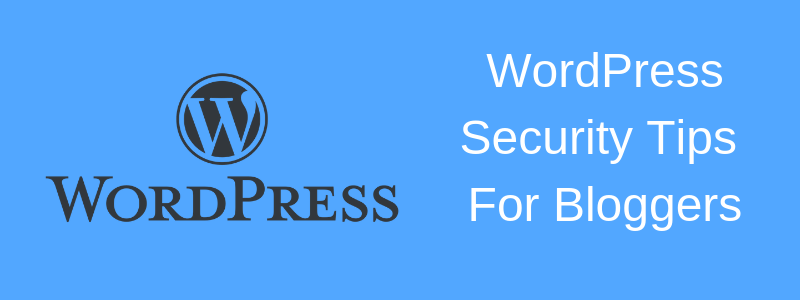If you are just starting out with WordPress, then you should probably think about the security of your future or already existing website. New bloggers often forget about the safety of their creations and this leads to hacking, loss of performance and revenue, and drop in trust levels.

In order to make sure that your WordPress site is functioning properly and is protected well, try these five tips that will help you understand the logic of good protection and how to implement it on your own website.
1) Install A WordPress Security Plugin
The first and most obvious step you should make is to install a WordPress security plugin. It is the easiest way to ensure that your site is well-protected and has a basic level of security.
When choosing the right security plugin, pay attention to such things:
- The security plugin should be from a reliable source. Try to find official WordPress plugins or the ones that WordPress has deemed safe. Plugins from suspicious websites have a high risk of being malicious.
- The price should be appropriate. Don’t just opt for whatever is cheaper. Not everything that is free is good. If you are on a budget, look for options available to you and choose the one that seems the most secure.
- The documentation should be right. Before installing a plugin, carefully check its documentation. In addition to that, look for reviews to see how well it performs.
Because there are many options available online, we have compiled a list of the ones that are more popular and effective:
- Wordfence Security: This plugin allows you to enforce two-factor authentication as well as scanning your website and identifying/blocking malicious attackers in real-time with its firewall.
- iThemes Security: Formerly known as Better WP Security, iThemes Security stops illegal login attempts, finds bots that search for weaknesses, conceals vulnerabilities, and scans the system.
- All in One Security & Firewall: It blocks user agents and IP addresses, and provides database and login security.
- Other options: Sucuri Security, BulletProof Security
2) Manage Your Themes & Plugins Wisely
Just like mentioned above, plugins that are not provided on the official website have a higher risk of being malicious. This also goes for themes you use for your WordPress site.
The configurations and settings on your plugins should be set manually by you. Don’t just leave them on default after installation. Go through the instructions and see what needs to be changed. Sometimes initial settings can be less secure than the ones you set.
In addition to that, you must always check that your WordPress version is up-to-date. The new updates are not there just for the sake of existing. They often provide an extra layer of security, which is always better than before. This logic also works for plugins and themes, so check regularly that you have everything updated.
Moreover, if you want extra search engine traffic it is recommended that you translate your website to other languages by using a special plugin.
There are two main types of translation plugins: automatic and manual. Automatic plugins translate your website themselves, which often leads to numerous mistakes.
Manual plugins let you translate your website on your own (or by using an online translation service such as The Word Point) and then enter the translated content into the plugin for it to be displayed when a user selects a certain language.
3) Change Your Default Username
The default ‘admin’ username you get at the very beginning should be changed right now. You won’t believe how many hackers try to login by using ‘admin’ in hopes that you forgot to change it or were simply too lazy to do so. And a lot of the times, it works.
Avoid falling into this trap by creating a new user and then deleting the old default ‘admin’ one. Luckily enough, host providers are now opting for different names instead of admin in order to avoid such easy hackings.
Another deal is password security. The number of people who use simple passwords is shocking. This is why you must always make sure that your password is as hard to guess as possible.
In order to do this, use both lower- and upper-case letters as well as numbers and special characters (password length of more than 14 characters are great). Also, avoid using sequential passwords, because those can be easily detected by hacking software.
Update your passwords regularly if you can to increase the level of security. And please, don’t use the same password for everything. You are practically asking for trouble.
4) Set Up Two-Factor Authentication & Assign Least Privileged Principles
If your login details are compromised, two-factor authentication will help prevent access to an intruder. This is why it is important to set it up so you can be sure there is yet another wall of defense. Here are some plugins to help you out:
- Rublon: With Rublon, you don’t need any configuration or training. In addition to English, it is also available in Turkish, German, Polish, and Japanese.
- Keyy: Keyy has a somewhat different setup for two-factor authentication. It replaces passwords with sophisticated RSA public-key cryptography.
- UNLOQ: This plugin has a shortcodes feature and multiple login options. It replaces the WordPress login and registration and provides a custom login URL.
Another way to get your site even more security is to assign the least privileged principles. This means that when you are giving access to a new person, you should set up a new login which will have no more security privileges required to enable them to do their job.
So, for example, if you hired an editor, the most access you will give them is to do just that. Don’t provide them with full-blown administrative access, because this means that you will be making yourself more vulnerable.
5) Back Up Regularly
Last but not least, make a schedule for backing up your database regularly. This can be done manually or with the help of specialized plugins or software. If you know that you can recover your data at any time, you will feel way more secure.
It is recommended to store a copy of your database either on your Google Drive, OneDrive, or Dropbox account. Moreover, it’s better to have at least two copies at all times. This is because malware infections can happen even through backups.
Some popular WordPress backup plugins include:
- UpdraftPlus: With over a million active installs, this remains the most popular WordPress backup plugin. There is a free and a paid version, and the plugin supports such storage options as Google Drive, Dropbox, and Amazon S3.
- VaultPress: This is one of the most powerful backup plugins by Automattic, the team behind WordPress.com, so you can be sure it only provides the best features. It is now a part of Jetpack though, so you will first have to install Jetpack.
- BackWPup: BackWPup supports Dropbox and Amazon S3 as a means to store data, but the premium version also allows you to use Google Drive and Amazon Glacier for this.
In addition to plugins we recommend also a hosting provider that offers regular backups of the whole website content and files for even better data protection.
Conclusion
To sum up, don’t forget that the above tips are the minimum required if you want to provide a fundamental security level to your website. Otherwise, it is very likely that the security ‘walls’ you built will be easily breached, and you wouldn’t want that to happen. Follow these steps and secure your site!
Author
 Frank Hamilton is a blogger and translator from Manchester. He is a professional writing expert in such topics as blogging, digital marketing and self-education. He also loves traveling and speaks Spanish, French, German and English. Meet him on Facebook.
Frank Hamilton is a blogger and translator from Manchester. He is a professional writing expert in such topics as blogging, digital marketing and self-education. He also loves traveling and speaks Spanish, French, German and English. Meet him on Facebook.
Leave a Reply